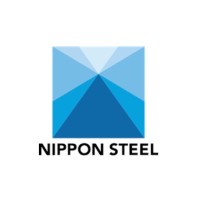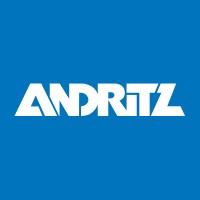
Nippon Steel Corporation Company Cyber Security Posture
nipponsteel.com<Nippon Steel Corporation does not recognize this account as OFFICIAL, but it is open for LinkedIn subscribers.> On April 1, 2019, we renamed ourselves as “Nippon Steel Corporation” (from Nippon Steel and Sumitomo Metal Corporation), to keep in pace with our advance as a growing global steelmaker with origins in Japan.
NSC Company Details
日本製鉄
618 employees
10912.0
333
Machinery Manufacturing
nipponsteel.com
Scan still pending
NIP_1953474
In-progress
Between 900 and 1000
This score is AI-generated and less favored by cyber insurers, who prefer the TPRM score.
 NSC Global Score
NSC Global Score.png)

Nippon Steel Corporation Company Scoring based on AI Models
| Model Name | Date | Description | Current Score Difference | Score |
|---|---|---|---|---|
| AVERAGE-Industry | 03-12-2025 | This score represents the average cybersecurity rating of companies already scanned within the same industry. It provides a benchmark to compare an individual company's security posture against its industry peers. | N/A | Between 900 and 1000 |
Nippon Steel Corporation Company Cyber Security News & History
| Entity | Type | Severity | Impact | Seen | Url ID | Details | View |
|---|
Nippon Steel Corporation Company Subsidiaries

<Nippon Steel Corporation does not recognize this account as OFFICIAL, but it is open for LinkedIn subscribers.> On April 1, 2019, we renamed ourselves as “Nippon Steel Corporation” (from Nippon Steel and Sumitomo Metal Corporation), to keep in pace with our advance as a growing global steelmaker with origins in Japan.
Access Data Using Our API

Get company history
.png)
NSC Cyber Security News
U.S. Steel (X) Closes Nippon Steel Merger; Golden Share Issued | X SEC Filing - Form 8-K
United States Steel completes merger with Nippon Steel North America, issues Golden Share to U.S. Government, and overhauls leadership.
Nippon Steel's purchase of U.S. Steel closes, with big role for Trump
The acquisition will involve $11 billion in investment in U.S. Steel through 2028, including $1 billion for a new U.S. mill that will increase ...
Nippon, US Steel Officially Close Deal, Backed By 5 Law Firms
Nippon Steel has officially closed its purchase of U.S. Steel, the companies announced Wednesday, forming a global steelmaking partnership ...
Global manufacturer Nippon Steel claimed by BianLian ransomware gang
The ransomware group posted the Tokyo-headquartered steel-making company on its dark leak site Thursday, claiming to have stolen 500 GB of data ...
Review of Proposed United States Steel Corporation Acquisition
On January 3, 2025, President Biden issued an order prohibiting the acquisition of United States Steel Corporation (U.S. Steel) by Nippon Steel ...
Nippon Steel CEO doubles down on pledge to acquire U.S. Steel after suing Biden administration
U.S. President Joe Biden plans to express concern over Nippon Steel's proposed $14.9 billion purchase of U.S. Steel, a person familiar with the matter said on ...
Top 10: Mining Companies Cybersecurity Strategies
Among mining companies leading the way on cybersecurity measures are BHP, Anglo American, Fortescue, Teck Resources, Antofagasta, Kinross Gold & South32.
US Steel, Nippon Steel Sue US Government Over Blocked $14.1B Deal
US Steel (X) and Nippon Steel said Monday they are suing the US government over President Joe Biden's blocking last week of the $14.1 billion sale.
Pittsburgh's Reed Smith, K&L Gates Join Fight to Save Nippon Steel-U.S. Steel Merger
The plaintiffs allege that the defendants' actions has stifled competition and innovation in the steel industry in violation of federal law.

NSC Similar Companies

ANDRITZ
ANDRITZ is an international technology group based in Austria. The company offers a broad portfolio of innovative plants, equipment, systems, services and digital solutions for a wide range of industries and end markets. Sustainability is an integral part of the company’s business strategy and cor

Rourkela steel plant
There is a little bit of steel in Everybody's life Show more Show less

John Deere
It doesn’t matter if you’ve never driven a tractor, mowed a lawn, or operated a dozer. With John Deere’s role in helping produce food, fiber, fuel, and infrastructure, we work for every single person on the planet. It all started nearly 200 years ago with a steel plow. Today, John Deere drives inn

MISUMI Group Inc.
MISUMI is the world’s largest supplier of fixed and configurable components for the manufacturing industry. MISUMI provides more than 1 Million different custom components for assembly automation. Its unique system enables the user to order our components without minimum order value or quantity an

AGCO Corporation
AGCO is a global leader in the design, manufacture and distribution of smart solutions for sustainable agriculture. Our portfolio is the most comprehensive in the ag industry, including a full line of tractors, combine harvesters, hay and forage equipment, seeding and tillage implements, grain stora

Atlas Copco
Great ideas accelerate innovation. At Atlas Copco, we have been turning industrial ideas into business-critical benefits since 1873. By listening to our customers and knowing their needs, we deliver value and innovate with the future in mind. Atlas Copco is headquartered in Stockholm, Sweden, with

Frequently Asked Questions
Explore insights on cybersecurity incidents, risk posture, and Rankiteo's assessments.
NSC CyberSecurity History Information
How many cyber incidents has NSC faced?
Total Incidents: According to Rankiteo, NSC has faced 0 incidents in the past.
What types of cybersecurity incidents have occurred at NSC?
Incident Types: The types of cybersecurity incidents that have occurred include .
Incident Details
What are the most common types of attacks the company has faced?
Additional Questions
What Do We Measure?
















Every week, Rankiteo analyzes billions of signals to give organizations a sharper, faster view of emerging risks. With deeper, more actionable intelligence at their fingertips, security teams can outpace threat actors, respond instantly to Zero-Day attacks, and dramatically shrink their risk exposure window.
These are some of the factors we use to calculate the overall score:
Identify exposed access points, detect misconfigured SSL certificates, and uncover vulnerabilities across the network infrastructure.
Gain visibility into the software components used within an organization to detect vulnerabilities, manage risk, and ensure supply chain security.
Monitor and manage all IT assets and their configurations to ensure accurate, real-time visibility across the company's technology environment.
Leverage real-time insights on active threats, malware campaigns, and emerging vulnerabilities to proactively defend against evolving cyberattacks.




